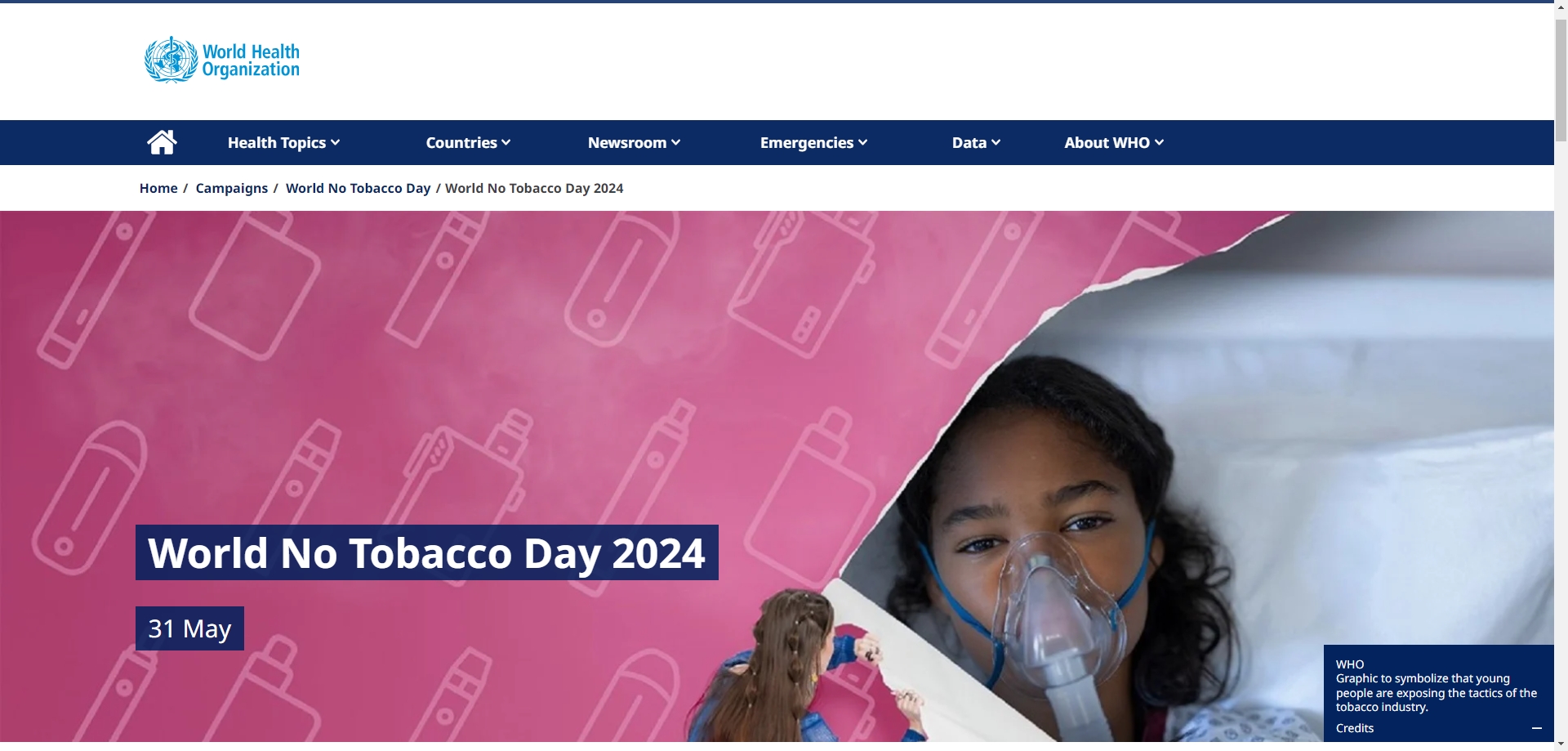Peking University, May 31, 2024: "Protecting children from tobacco industry interference" is designated by the World Health Organization (WHO) as the theme for World No Tobacco Day 2024. Adjacent to International Children's Day, which is celebrated on June 1 in many countries, this year's event bears special significance on the urgency for governments, societies, and businesses to protect children and youth from tobacco exposure.
Screenshot/WHO
Why are children vulnerable to tobacco use?
Children are especially susceptible to tobacco use. Studies show that adolescents are more sensitive to nicotine, becoming dependent sooner than adults. Globally, 37 million children between the ages of 13 and 15 use tobacco, and minors use e-cigarettes at higher rates than adults in every region.
For many children, the hazards "flicker" inside their families and communities. "Children whose caregivers are smokers have a 70% higher risk of using tobacco before the age of 15," said Ma Yinghua, a professor at the Institute of Child and Adolescent Health of Peking University. "Once picking up the bad habit, most adolescents can't quit (smoking) as they grow into adulthood," he added
Health risks associated with tobacco use include cancer, heart disease, stroke, lung diseases, diabetes, and chronic obstructive pulmonary disease (COPD). Tobacco use is also a leading cause of preventable death.
Peking University unveils a committee for medical institutions on smoking control and health promotion on May 25, 2024.
What can institutions do?
Institutions should collaborate with the World Health Organization or regional health agencies to control tobacco use. This can involve developing educational materials or participating in nationwide initiatives to raise awareness, especially among young people. Academics and researchers can engage in tobacco control and health promotion while advocating for stricter regulations.
More about World No Tobacco Day:
World No Tobacco Day was established in 1987 by the member states of the World Health Organization to raise awareness of the tobacco epidemic and the preventable deaths and illnesses it causes globally.
This event educates the public on the risks of tobacco use, the tactics of tobacco companies, the efforts by the World Health Organization to combat the epidemic, and the actions individuals can take to protect future generations and assert their right to health and well-being.
According to the WHO, tobacco kills more than 8 million people each year, including an estimated 1.3 million non-smokers exposed to second-hand smoke.
*This article is featured in PKU News' "Why It Matters" series.
Written by: Jawad Shabbir
Edited by: Dennis Meng
Cover photo: Unsplash


